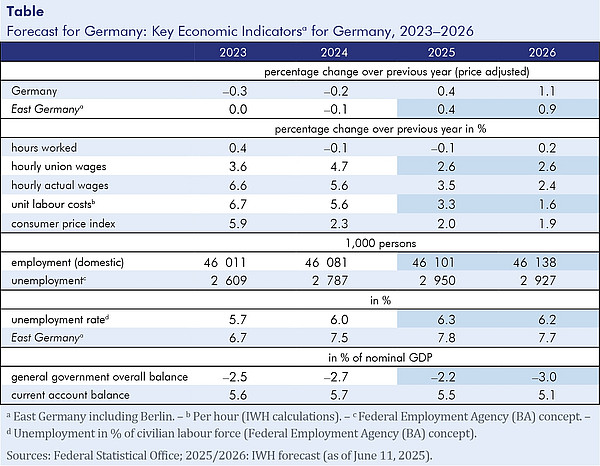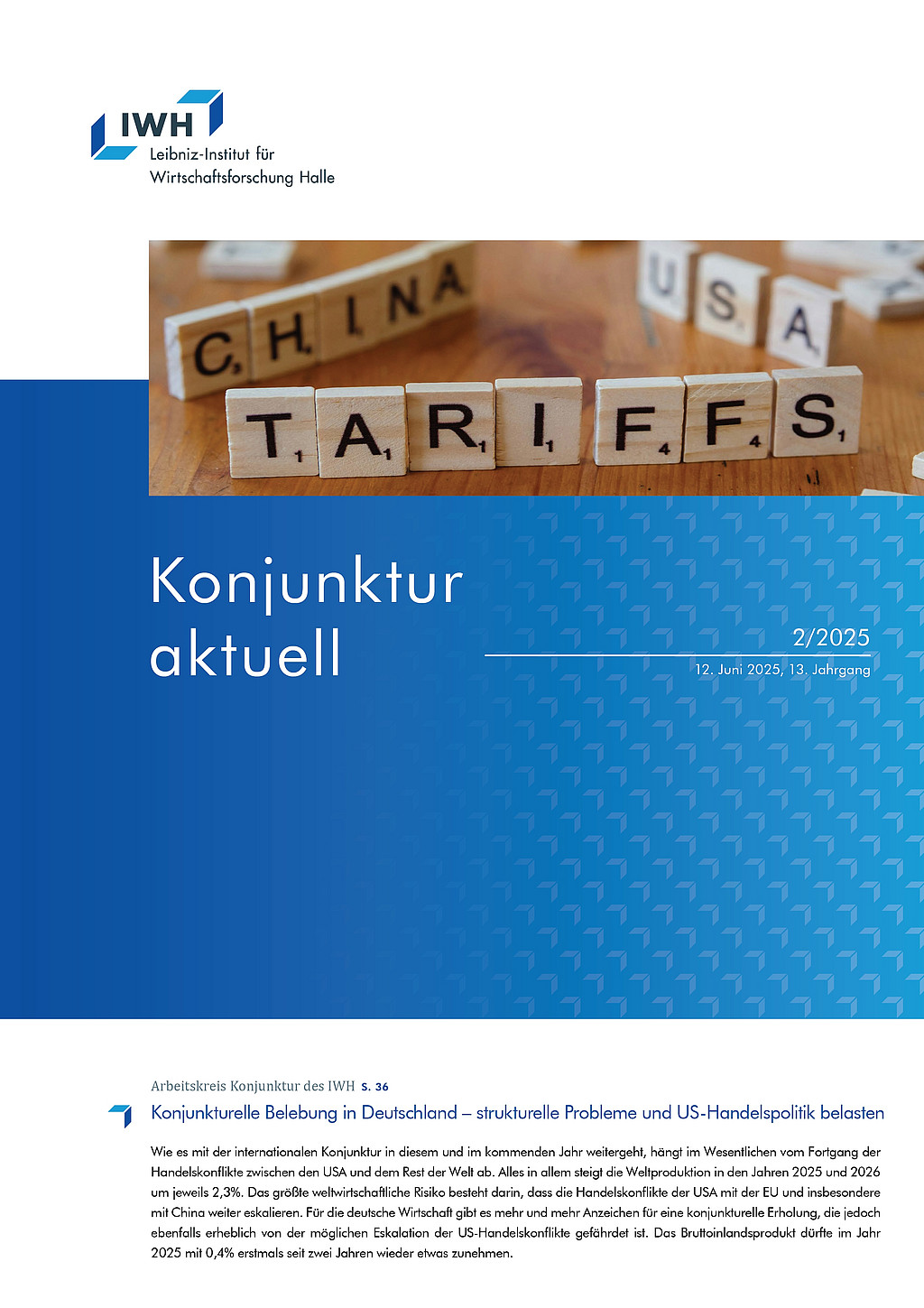Economic recovery in Germany – but structural problems and US trade policy weigh on the economy

In the first quarter of 2025, the expectation of significantly higher tariffs in the future triggered a boom in US imports. In the euro area, economic expansion received a small boost. Price momentum has continued to slow in both the US and the eurozone in recent months, partly due to the sharp fall in the price of crude oil. In both economic areas, key interest rates are likely to be lowered further over the course of the year. By contrast, fiscal policy in the US is having a noticeable negative impact on the economy this year and next, while fiscal policy in the eurozone is roughly neutral. In the second half of 2025, global trade is likely to decline significantly due to tariff increases in the US. However, assuming that the trade conflicts do not escalate, we do not expect a recession. Instead, according to this forecast, global production will increase by 2.3% in both 2025 and 2026.
“There are increasing signs of a recovery in the German economy,” says Oliver Holtemöller, head of the Macroeconomics Department and Vice President at the IWH. Business prospects have slowly brightened since the start of the year, and production expanded by 0.4% in the first quarter of 2025. However, the 3.2% increase in exports is largely due to temporarily higher demand from the US. In addition to exports, private consumption also expanded significantly. By contrast, private investment in equipment fell, as has been the trend for the past two years. Structural problems continue to weigh on the German economy (demographics, energy transition, structural change in China). The European Central Bank's monetary easing is supporting the economy, particularly through more favourable financing conditions for the housing industry. This forecast assumes that US tariffs will remain at roughly the current level. Under this assumption, German exports will suffer a setback in the second and especially the third quarter. This is likely to significantly dampen the economic recovery but not stifle it. The fiscal policy turnaround is not likely to have a noticeable impact on production until 2026. The general government budget deficit will remain high throughout the forecast period.
“A considerable risk for the German economy lies in a possible escalation of the US trade conflicts,” says Oliver Holtemöller. The increase in US tariffs on EU goods announced at the beginning of April was only reduced for a limited period until July (from 20 to 10 percentage points) in order to create an opportunity to negotiate a “deal”. The conflict between the USA and China also harbours considerable risks for the German economy. Sluggish licensing for exports of rare earths has led to a shortage in Germany, which is threatening production in parts of the manufacturing industry. “In general, the economic antagonism between the USA and China requires German industry to perform a special balancing act, as it is closely intertwined with both economic areas,” the IWH economist says.
The extended version of this forecast contains the following box (in German):
Box: On the estimation of potential output
Publication:
Drygalla, Andrej; Exß, Franziska; Fourné, Marius; Heinisch, Katja; Holtemöller, Oliver; Kämpfe, Martina; Kozyrev, Boris; Lindner, Axel; Mukherjee, Sukanya; Sardone, Alessandro; Schultz, Birgit; Zeddies, Götz: Konjunktur aktuell: Konjunkturelle Belebung in Deutschland – strukturelle Probleme und US-Handelspolitik belasten. IWH, Konjunktur aktuell, Jg. 13 (2), 2025. Halle (Saale) 2025.
Whom to contact
For Researchers

Vice President Department Head
If you have any further questions please contact me.
+49 345 7753-800 Request per E-MailFor Journalists

Head of Public Relations
If you have any further questions please contact me.
+49 345 7753-765 Request per E-MailIWH list of experts
The IWH list of experts provides an overview of IWH research topics and the researchers and scientists in these areas. The relevant experts for the topics listed there can be reached for questions as usual through the IWH Press Office.
Related Publications

Konjunktur aktuell: Konjunkturelle Belebung in Deutschland – strukturelle Probleme und US-Handelspolitik belasten
in: Konjunktur aktuell, 2, 2025
Abstract
<p>Wie es mit der internationalen Konjunktur in diesem und im kommenden Jahr weitergeht, hängt im Wesentlichen vom Fortgang der Handelskonflikte zwischen den USA und dem Rest der Welt ab. Alles in allem steigt die Weltproduktion in den Jahren 2025 und 2026 um jeweils 2,3%. Das größte weltwirtschaftliche Risiko besteht darin, dass die Handelskonflikte der USA mit der EU und insbesondere mit China weiter eskalieren. Für die deutsche Wirtschaft gibt es mehr und mehr Anzeichen für eine konjunkturelle Erholung, die jedoch ebenfalls erheblich von der möglichen Eskalation der US-Handelskonflikte gefährdet ist. Das Bruttoinlandsprodukt dürfte im Jahr 2025 mit 0,4% erstmals seit zwei Jahren wieder etwas zunehmen.</p>



